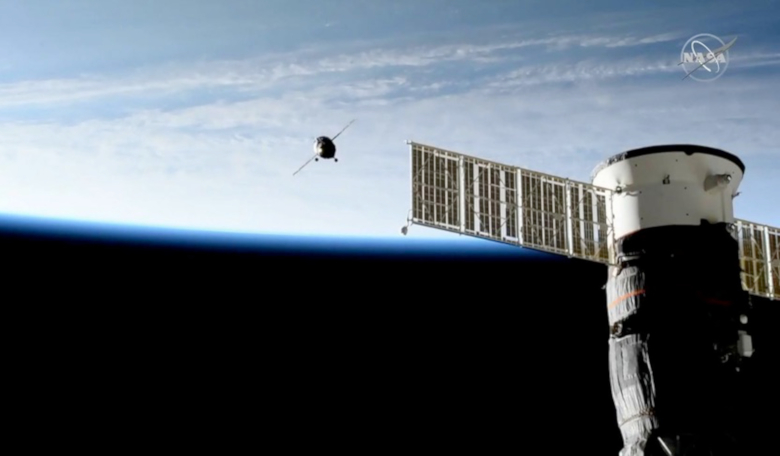Success for the Soyuz MS-14 spacecraft as it finally docks with the International Space Station nearly 72 hours after aborting its original attempt to connect with the MIM-2 Poisk module.
Flight controllers reported no issues as the spacecraft parked up, this time at the aft port on the Zvezda service module at 11:08 pm on 26 August.
"The second time was the charm," said NASA spokesperson Rob Navias during live commentary just after the Soyuz docked. "A flawless approach."
Soyuz MS-14 is the first Soyuz capsule to visit the space station without a human crew, as the main mission objective was to test in-flight verification and validation of new motion control and navigation systems and a revamped descent control system, ready for when Russian crew launch transition from the Soyuz-FG to the Soyuz 2.1a rocket beginning in Spring 2020.
While there was no human crew onboard the spacecraft, there was one lofty figure sat in the commander's seat; Skybot F-850. Packed on board with 658 kilograms of food and other vital supplies to help keep the station crew going, Skybot F-850 is making its debut at the ISS.
Cosmonauts plan to perform a number of tests on the robot including movement tests and how well it can communicate with the station’s Russian crew. It will also assist its human companions with certain tasks in order to assess the robot’s ability to function in microgravity.
Skybot will be the second semi-autonomous robotic humanoid to carry out a mission aboard the station - the first was NASA’s Robonaut2. Skybot F-850 will return to Earth when Soyuz MS-14 undocks at the ISS and heads for Kazakhstan on 7 September.











